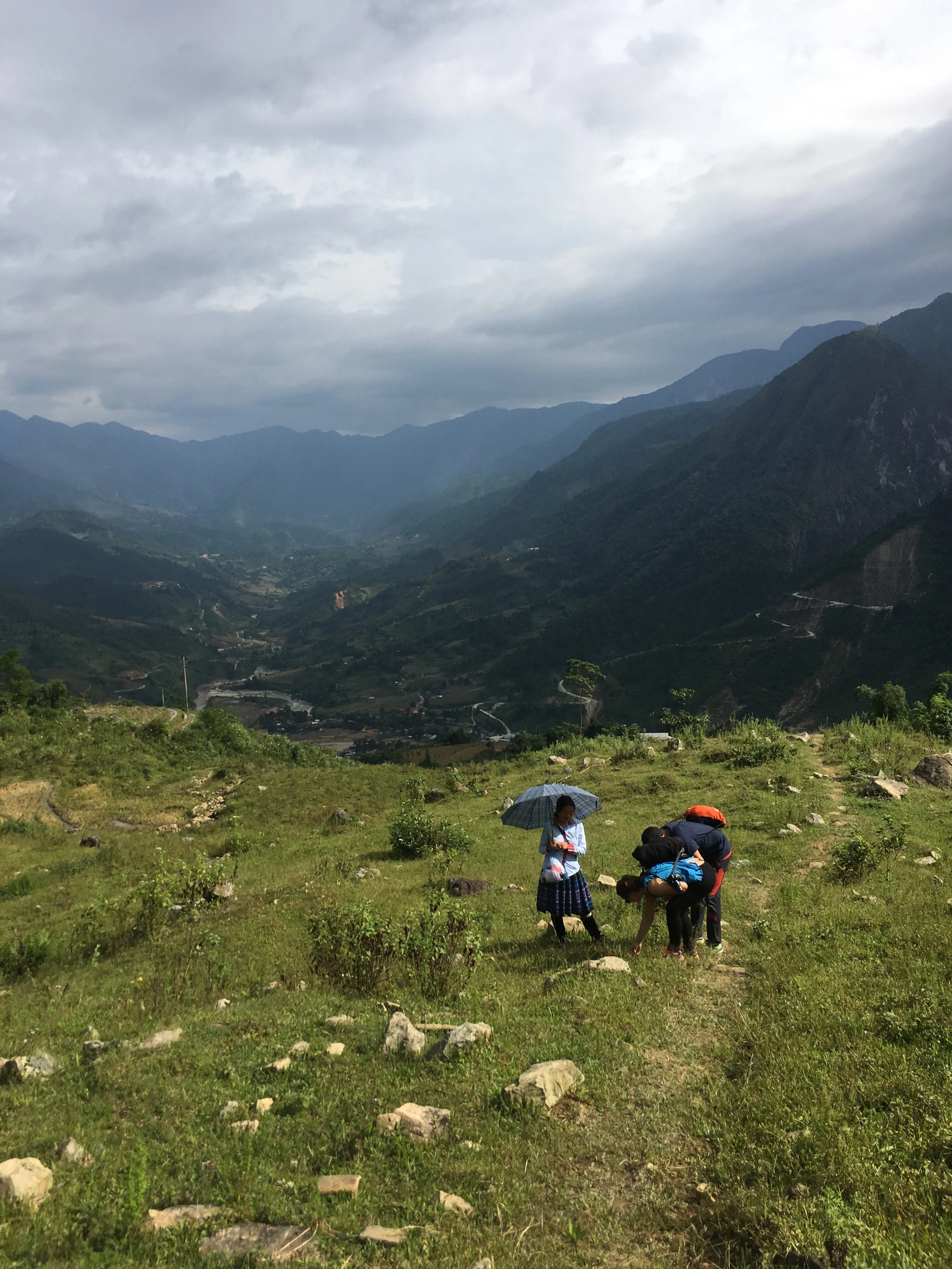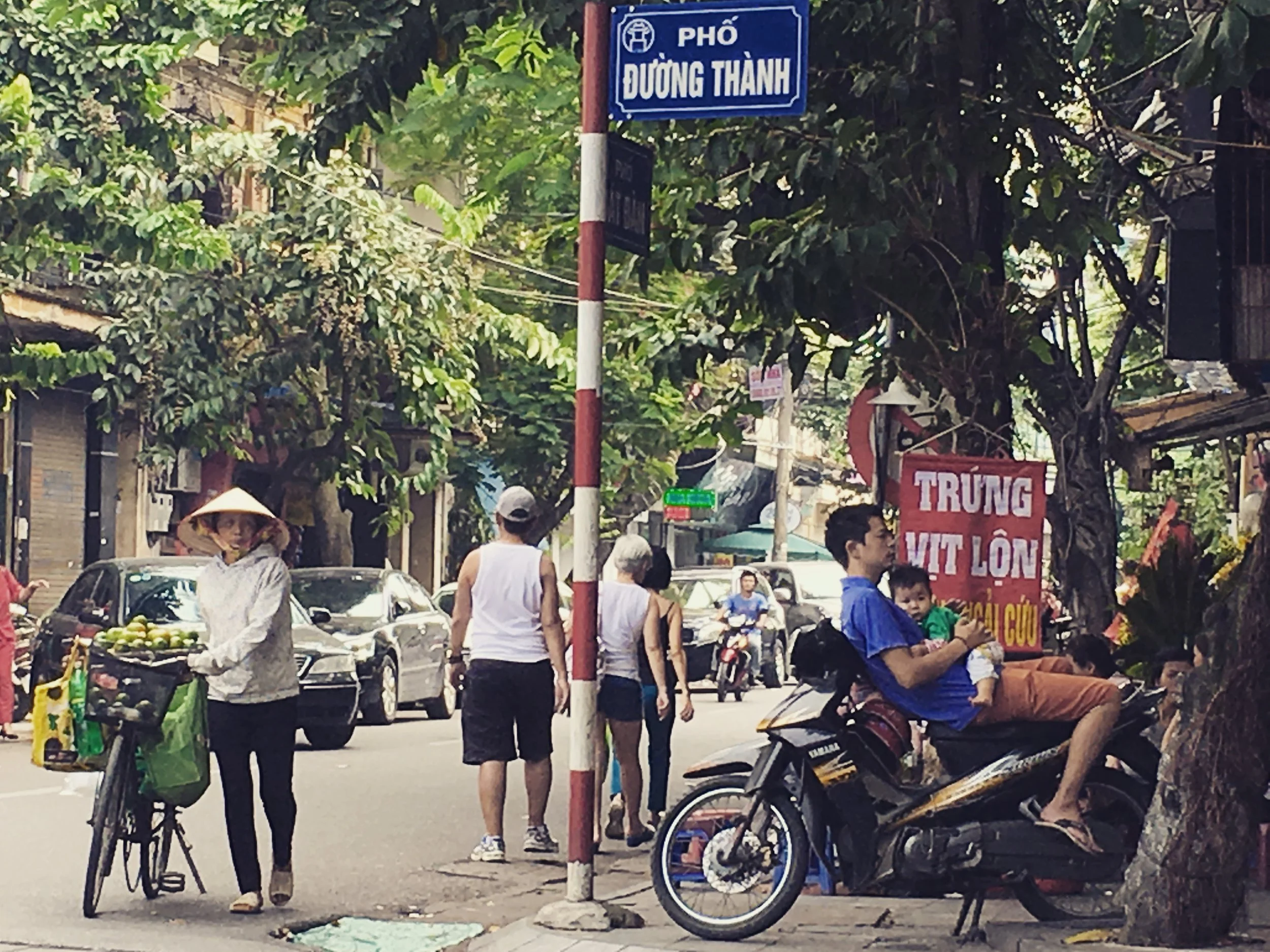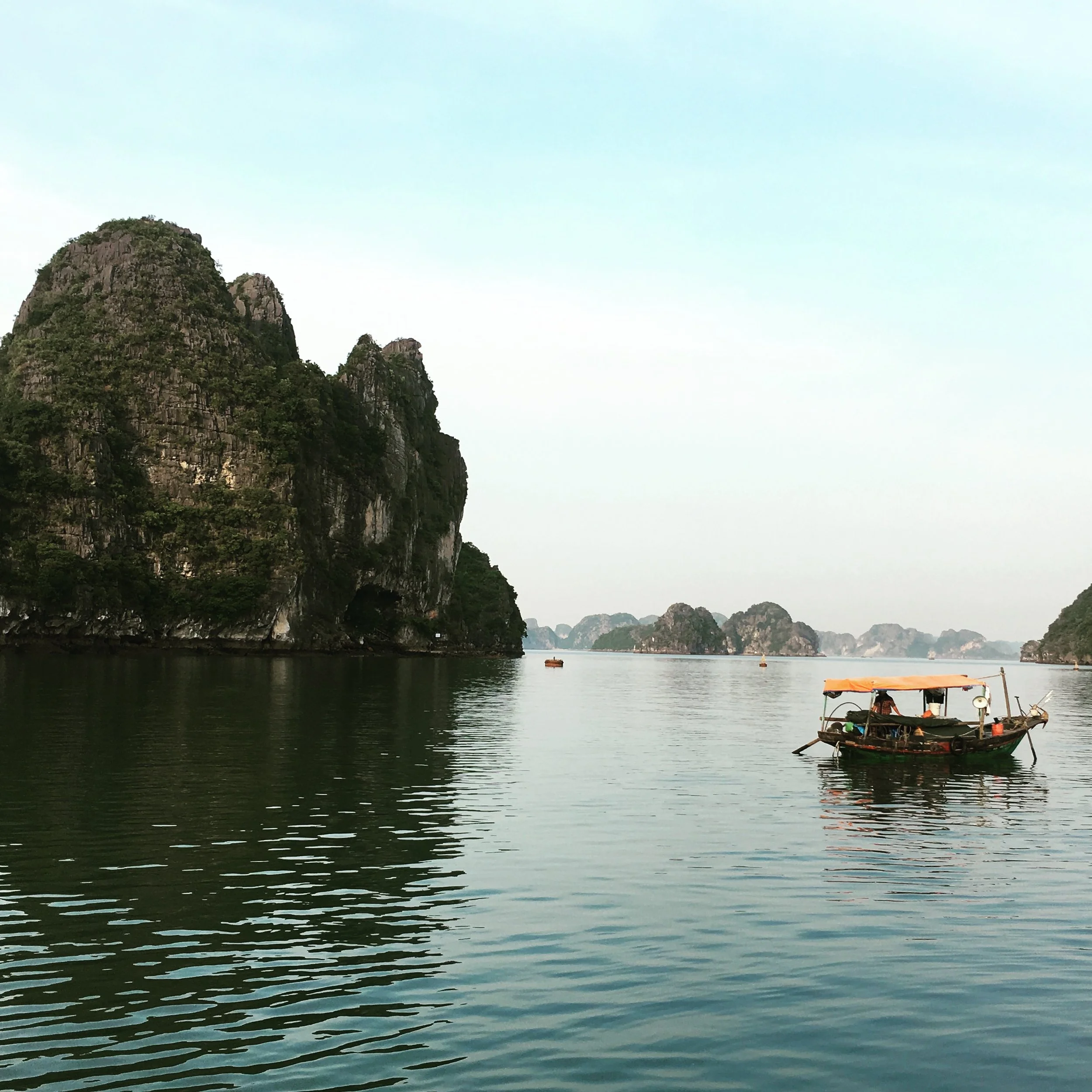Sa Pa, Day 1
For a majority of my adult life, when traveling, I’ve attempted to reflect on the adventure in one way of writing or another. Mostly, the writing involves recounts of the experiences, observations of other tourists or local people, but mostly of the spaces or sites observed.
It’s been now nearly nine years since I left for London; embarking on a study-traveling quest that I believe impressed on me larger views of the world than what I’d been able to comprehend before.
What has changed for me, and what I’ve realized in the past eight years is an evolution or a re-prioritization of the essence of what makes travel so spectacular. What I’ve come to realize (as our driver, who intends to take us to the Hanoi airport for a night flight to Da Nang, speeds at ridiculous rates, in spurts, at kilometers per hour that I don’t quite understand) is that the beauty of travel isn’t the things you intend on seeing, but the unexpected people you meet and get to know, sometimes in very significant ways.
We just returned from a two-part, six-day trip that took us on night trains, and hikes in the north mountainous regions of Vietnam outside the villages of Sa Pa, to a “cruise” of Ha Long Bay, where we biked through rice fields, smiled at water buffalo and swam in the Gulf of Tonkin. What I found over the last few days were more reasons to believe, as I stated in my short (introductory) post, is that though we spend vast amounts of energy celebrate our differences within our own cocoons of our given societies/villages, we are most often more similar than we are different.
Sa Pa
Arriving to Lao Chi after a rumbling overnight train ride, where we were afforded “soft bed” sleeper compartments (the soft bed perhaps a mild joke), we quickly discovered in the 5:30a thick-border-town-air our tour ride that would take us to the mountainous town of Sa Pa. There we would meet our guide at a hostel, take a shower, and then grab breakfast before our “adventure(s)” of touring the smaller villages of the Sa Pa-region, and its native minority groups, would commence. Though our ride had my name spelled ‘Nathan Sheels” on a print out, it was me she was looking for, and so we piled into a minibus (the first of many on this trip – more on that later) with another couple who we soon learned were from Spain.
Riding through Lao Chi, a town known for its significant border crossing to China and as a railway port for visitors to the Sa Pa region, we quickly escaped the thick humid morning air and began climbing, catching our first views of the terraced rice fields that grace the covers of Vietnamese travel guides the world over. As we broke North, I captured what happened to be one of my favorite pictures this trip; a rising sun over the most southern tip of the Himalayas (we’d come to find out later), casting reddish hues on the already-at-work locals in the rice fields of the valley below.
Mind you, as we stepped onto the porch of hostel in Sa Pa, I still didn’t know what we were in for. Apparently, Rebecca had spent a bit more time listening to the travel agent at Ethnic Travel (the agency in charge of our Ha Long and Sa Pa trips), and knew we were in store for some intense “trekking”. I joked I’d just wear my Crocs, when our guide, Lan, showed up. She quickly smiled, and encouraged me that it’d be in my best interest to wear something a bit more like the running shoes I’d packed. She was right.
As we left our bulky storage, and began walking down the hill of the drive toward the edge of town, I still wasn’t sure what we were doing, until the moment we took a sharp left off the nicely paved road, and down a steep embankment, spiraling and weaving over streams of agriculture-feeding water streams, and thick brush lining the rice fields. Quickly, I realized that first of all I had to take off the long sleeve shirt I was wearing, and second this wasn’t going to be the mild tour I’d thought it would be; it would be instead a 30+ kilometer trek up and down through rice fields, bamboo forests, villages build on the side of limestone rock-faces, and – ultimately – through some of the most beautiful landscapes I’ve witnessed in my entire life.
At lunch time, we’d made our way 10 kilometers, to where we’d eat lunch; a thatched roof dwelling on the side of a small village on the edge of the valley we’d be spending the next 20 kilometers, with the Spanish couple (whose names we had yet to discover). We quickly connected with them, and chatted over how the hike had already been more than we’d anticipated but that the fried rice, and Bia Hanoi beer we now enjoyed were two of the most pleasant things we’d ever ingested.
As we had made our way to the lunch spot, our two black Hmong guides, who’d helped us by extending some of the strongest supportive hands down the trail, and over boulders, when we needed them left us, but not before they gave us the opportunity to purchase some of the items they had hand made. The black Hmong are a minority group that live in the Sa Pa region, and are known for their ability to make amazing indigo-died fabrics, handbags, and clothing. Their ornamental garb is distinguishable from other Hmong groups, by it’s dark colors, and bright accents and head scarves. The two women were delightful, and I don’t think that I’ll ever quite get the amazing smile of one them out of my memory, when I later recount this trip.
That night, following the final 5 kilometers, and after cutting directly off the trail and snaking our way, while also balancing on the 4-inch rice field walls like a balance beam, we arrived at what would be the first of our two home-stays. Waiting for us there was a very genuine host, cold Bia Ha Noi beer, and an amazing second-level view of the valley that helped aid our aching legs.





